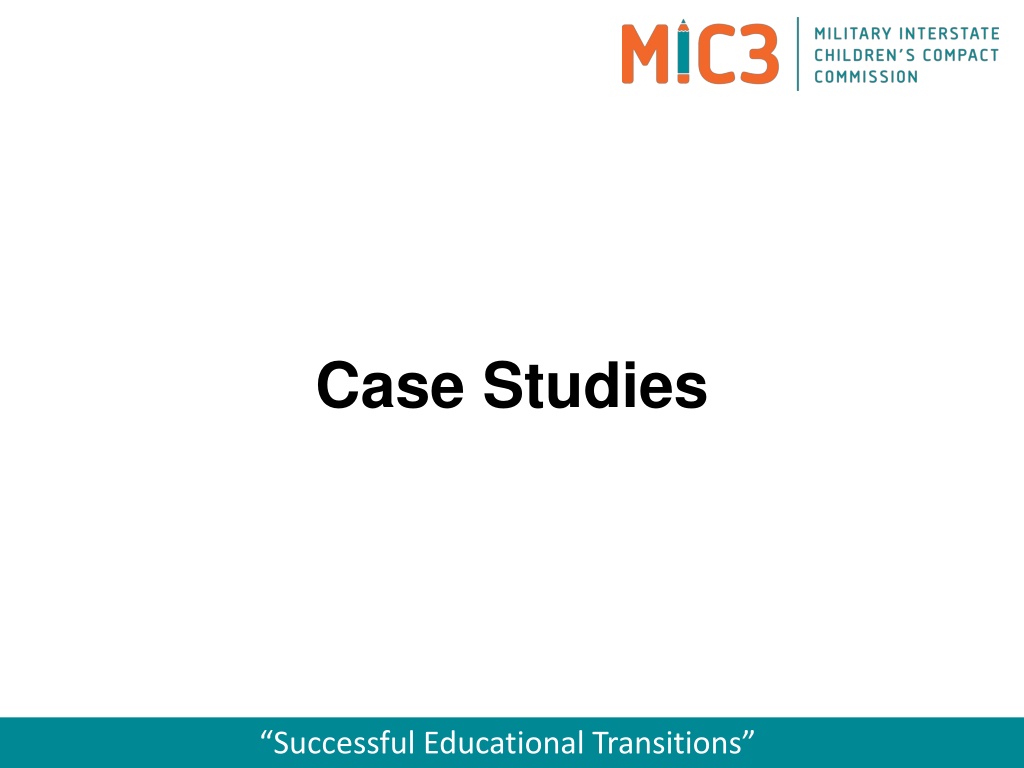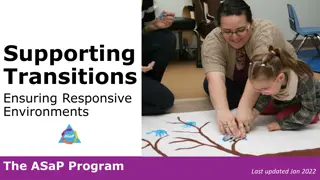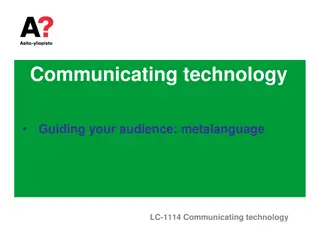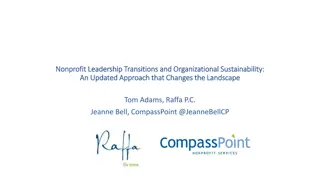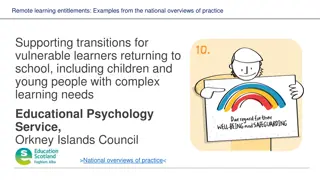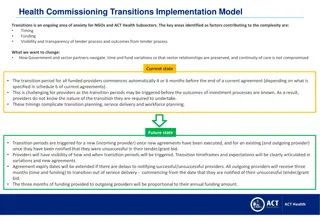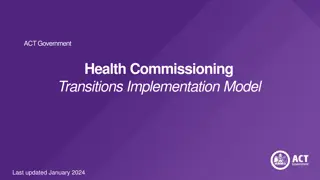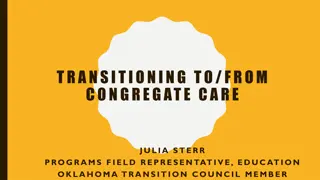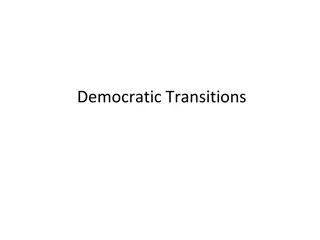Successful Educational Transitions: Case Studies and Outcomes
Explore three case studies highlighting educational transitions, including enrollment challenges based on state eligibility ages, transcript requests, and credit transfer issues for high school students. Understand the outcomes and obligations of sending and receiving states in ensuring a smooth educational transition for students.
Download Presentation

Please find below an Image/Link to download the presentation.
The content on the website is provided AS IS for your information and personal use only. It may not be sold, licensed, or shared on other websites without obtaining consent from the author. Download presentation by click this link. If you encounter any issues during the download, it is possible that the publisher has removed the file from their server.
E N D
Presentation Transcript
Case Studies Successful Educational Transitions
Case Study #1 A student who turned 5 years old on September 23, moved to a state where the Kindergarten (K) eligibility age is 5 years old by September 1. The sending state eligibility is age 5 by August 1. The student did not attend Kindergarten in the sending state. The parent states said had they remained in the sending state, the child would have been in Kindergarten, therefore the receiving school should enroll the child based where the child would have been placed in the sending state. Successful Educational Transitions
Outcome #1 The receiving state is not obligated to enroll and allow the student to start Kindergarten. If the student had enrolled and attended Kindergarten in the sending state prior to the move, the receiving school is obligated under the Compact allow the student to continue in Kindergarten - regardless of the cut-off date. Note: The parent felt the child was ready for Kindergarten, and asked the school for an assessment. The child was tested and allowed to start early. This accommodation is outside of the Compact. States and schools vary in their ability to test for early enrollment. Successful Educational Transitions
Case Study #2 A family moved to a new duty assignment over the summer. The parent had unofficial transcripts from the sending school. The sending school office was closed during the summer. The student tried to enroll in the new school, however was denied enrollment due to lack of official school transcripts. Successful Educational Transitions
Outcome #2 The receiving state is obligated to enroll the student and request official records from the sending school The sending state registrar shall provide unofficial records to the parent on request. The receiving state shall enroll and place the student based on the unofficial records, pending receipt of the official records. The school in the sending state will process official records within 10 business days. [Except school staff breaks (i.e. spring, summer, fall, or holidays)] Following return, time shall not exceed 10 business days. Successful Educational Transitions
Case Study #3 A high school junior withdrew from a sending school on 5/1, prior to school year end on 5/25. After they moved to the new state, the parents contacted the school to close out the year so the student could be promoted to 12th grade. The sending school said they would not award credit because the student did not complete the school year, and they only award credit at the end of the year. The receiving school contacted the sending school, only to reconfirm the information. Successful Educational Transitions
Outcome #3 In general, it is difficult for the receiving school to enroll the student without official records or confirmation of promotion to the next grade by the sending school. 1. Both State Commissioners and two schools were involved in finding a resolution. 2. Student records and coursework were examined, and it was concluded that final grades and credit for all classes would be given, except Honors Chemistry. 3. Advise parents: 1. Be aware of school year end dates. Avoid moving or pulling student out from school in the 4th quarter of school (if possible) 2. Request a delayed move or extension from their command (contact your School Liaison) Successful Educational Transitions
Case Study #4 Family moved due to hardship in early November. In the sending school, the student was in 10th grade honors English and is enrolled in the same course in the receiving school. The new teacher is asking the student to complete class assignments from beginning of the year to November due to their class requirements. Parent feels the student should not have to do any additional work for the class since they just moved. The student s transcript had a good transfer grade from the same course in the sending school. Successful Educational Transitions
Outcome #4 The receiving State Commissioner contacted the school administrator who met with the School Liaison Officer. The school administrator adjusted their school requirements and that the student would be assigned classwork from their arrival date. The parents were happy with the outcome. The case was resolved within 36 hours of the Commissioner notification. The parents didn t realize how supportive the school and teachers were. The military leadership was also briefed on the outcome. Successful Educational Transitions
Case Study #5 A service member moved on a Permanent Change of Station (PCS) to a new state a few months ago. The student was enrolled in American Sign Language (ASL) at the sending school as a world language". An ASL course is not offered at the receiving high school in State B. What must the school do under the Compact? Successful Educational Transitions
Outcome #5 The receiving school must place the student based on prior course and program enrollment. However, if the receiving school does not have the same course/program they are not mandated to create a course for the student. The receiving school may start a new class/pay for the student to take it online, however the Compact does not obligate them to do this. Some schools have made accommodations however it was on their own and based on their ability to do so (usually funding or availability of the course in that community). Successful Educational Transitions
Case Study #6 A family recently moved between states to a new duty station. The parents said their son was on course to graduate from the sending high school at the end his junior year so he could enlist in the military. The receiving district was unsure if the student could meet the graduation requirements of either district. Successful Educational Transitions
Outcome #6 The receiving state was willing to allow the son to graduate from the sending state s high school but wanted to make sure it was consistent with the Compact. The Compact refers to transfers during senior year, however could apply to a junior if the student has met the graduation requirements of the sending or receiving district. This would also determine which district would award the diploma as well. The sending school provided info to assist the receiving school district to determine required coursework. The student met the sending state requirements and received a reciprocal diploma. Successful Educational Transitions
Case Study #7 A retiring active duty member and his family is moving to his final home of record over the summer. His son will be entering his Senior year and the family is worried about the transition to the new school. Does the Compact cover this student? Successful Educational Transitions
Outcome #7 Yes, the Compact covers: Children of active duty members of the uniformed services, National Guard and Reserve on active duty orders, and, for one year after leaving service, members or veterans who are medically discharged or retired Or families of members who perish for a period of one year. Successful Educational Transitions
Case Study #8 In State A, some school districts have stated that the T-DAP immunization requirement is not covered under the Compact's 30-day immunization rule. Does the Compact cover this student? Successful Educational Transitions
Outcome #8 Most required immunizations and vaccinations are regulated by the state departments of health. Yes, the Compact covers: Immunizations Compacting states shall give thirty (30) calendar days from the date of enrollment. For a series of immunizations, initial vaccinations must be obtained within thirty (30) calendar days. The student must be allowed to enroll and obtain the immunizations within the 30 day window. Successful Educational Transitions
Case Study #9 A new school has received a transfer student in their senior year. The student will meet the school s graduation requirements if the school waives the 2 credit PE requirement, which they are willing to do. The student has room in their schedule to take US History, a requirement for graduation. The student does not like history. The parent does not want the student to take US History, and asked if the student can receive a reciprocal diploma from the sending school instead. Does the Compact cover this student? Successful Educational Transitions
Outcome #9 The new school is making accommodations under the Compact by waiving the 2 credit PE requirement in order to graduate on time. Under the Compact, it is reasonable for the school to require the student to take the US History course. The Commissioner and Administrator informed the parent of the requirement and that a reciprocal diploma was not an option. Ultimately, the student took the course. The student received a diploma from the new school. Successful Educational Transitions
Case Study #10 A military family is moving to a new duty station and prefers their child attend a private high school versus the local public school. The private school will provide the student with a financial scholarship and the student will play sports, which under the Athletics Association (AA) rules, would require the student to sit out of the sport for one year. The alternative was the student not accepting the scholarship and be eligible to play on the team immediately. The parent said because the child is military, under the Compact, the AA rule be waived and the child Successful Educational Transitions should be allowed to play this year.
Outcome #10 Athletics eligibility is governed by State Athletics Associations. The parent brought the case up to the Compact Commissioner, who although the case was not Compact related, tried to assist. The parent also contacted the State Athletics representative, and other military organizations for assistance. The State Athletics Association upheld the ruling, and provided that their rule applies to all transfers - both civilian and military students. Successful Educational Transitions
